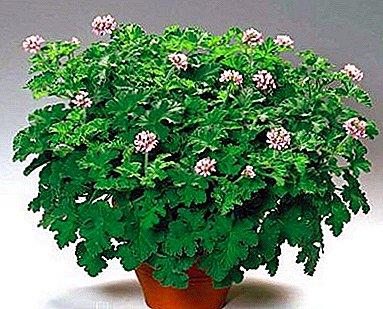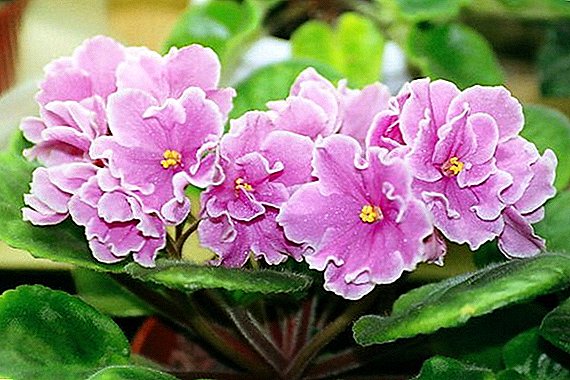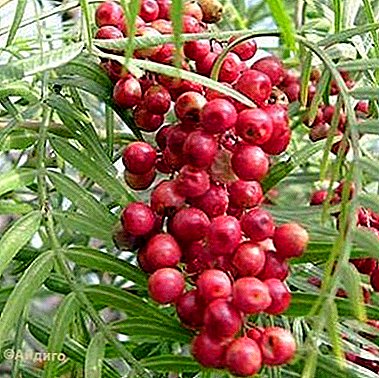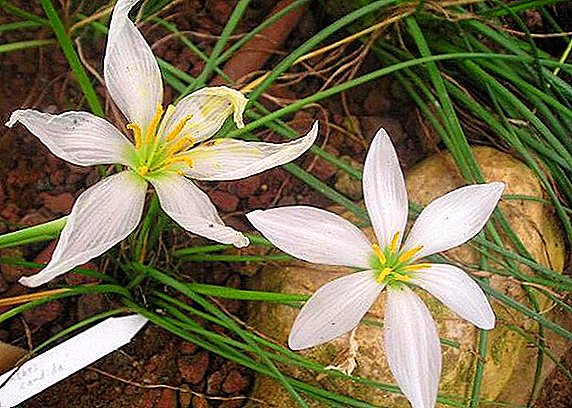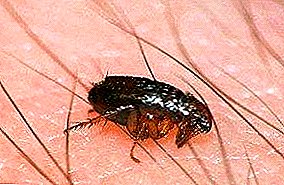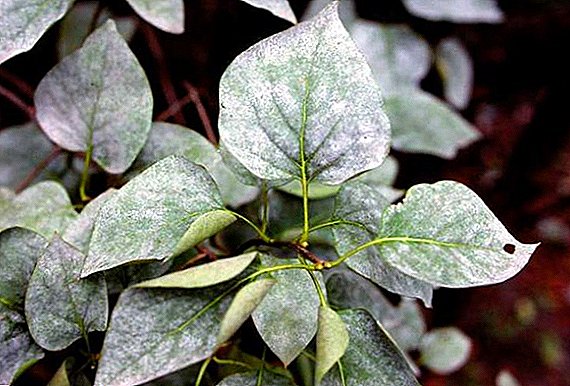 Mealy dew (as well as ash, linen) is a common and very dangerous disease that appears on indoor and outdoor plants and requires immediate treatment.
Mealy dew (as well as ash, linen) is a common and very dangerous disease that appears on indoor and outdoor plants and requires immediate treatment.
What is dangerous and where does it come from
Mealy dew is dangerous for plants not only by the loss of their decorative appeal, but also when the disease appears, the plant loses its nutrients, and the processes of photosynthesis, respiration and evaporation are disturbed. All this leads to the fact that the leaves begin to dry out and die.
Through leaf stalks, the disease passes to young shoots, which in turn die off even with slight cold snaps, since they have not yet had time to form.
This disease is dangerous not only to the leaves and young shoots, it completely infects the whole plant, which leads to irreversible consequences and death.
Did you know? Often powdery mildew is not treatable, it can destroy even an oak over 50 years old.
 Many wonder where powdery mildew comes from. Mealy dew is a disease caused by a fungus that often lives in the soil, but it only manifests itself under certain conditions:
Many wonder where powdery mildew comes from. Mealy dew is a disease caused by a fungus that often lives in the soil, but it only manifests itself under certain conditions:- at high humidity and temperature of about 25 ° C;
- with a high content of] nitrogen in the ground;
- with dense vegetation;
- at non-compliance with the irrigation mode. For example, do not often water the flowers before the topsoil dries out. Or overdry the ground, and then fill with plenty of water. Such actions lead to a weakening of the immune system and subsequent infection.
- by air (from already affected plants);
- through the water, which is irrigated;
- through the arms (provided that you touch the diseased plant, and then the healthy one);
- through parasitic insects.
Important! If you have a flower in your home that caught the ashes, it should be isolated as much as possible from others in order to avoid the spread of the fungus.

Signs of defeat
Ashes defeat by the fact that on the leaves, young branches, fruits appear a bloom of white (sometimes other) color in the form of spots, this bloom is a mycelium.
Then on it grow the so-called brown fruits, which contain the spores of the fungus. These fruits can be easily seen, their diameter is 0.2-0.3 mm.
The infection begins to infect the plant from the leaves that are closest to the surface of the soil, and then goes to the entire plant.
How to deal with powdery mildew
Mealy dew can appear on room rose, petunia and other indoor plants, then we will look at prevention methods and how to deal with the disease if it has already appeared. 
Prevention
In order to keep peppelitsa on your indoor flowers, you should follow some preventive measures and care for plants. To avoid infection you need:
- Perform annual spraying with potassium permanganate or sulfur pollination, preferably from late May to early September.
- Frequent use of nitrogen fertilizers is not recommended. And to strengthen the immune system is best to use phosphate or potash fertilizers.
- Frequent airing of the room is recommended, but it is very important to avoid drafts.
- The appearance of aphids and scale insects should be avoided; these parasites promote the spread and rapid penetration of powdery mildew into the plant.
- It is not recommended to use soil from a summer house for houseplants.
Important! If you decide to use the land from the dacha, then make sure that the earth is not over-moistened and does not have the smell of mold.
Folk Remedies
There are many folk remedies for powdery mildew, but we will consider the most effective ones:
1. A solution of baking soda and laundry soap.
This solution is prepared as follows: 4 g of baking soda and a small amount of soap (soap serves as gluten) are added to 0.9 l of water. The resulting mixture should spray the plant so that it falls on both sides of the leaves. Spray need no more than two times a week.  2. Treatment with serum.
2. Treatment with serum.
Normal whey should be diluted in water in proportions of 1:10. When it hits the leaves, such a solution creates a film that complicates respiration of the mycelium, and the plant receives additional nutrients. Spray should be done every three days for 12 days.
Did you know? Mealy dew can live in the ground for more than 10 years, while not showing itself.3. Ash treatment.
To prepare the solution, 100 g of ash is taken and stirred in 1 l of hot water. The resulting mixture is infused for about a week. Then the liquid is poured into another clean vessel, add a little soap and stir.
Spray this solution preferably every day for 3-4 days. And the remaining ash is stirred with water, and the plant is watered.
4. Mustard solution.
In a bucket of warm water, add 2 tablespoons of mustard powder, stir and allow to brew for 24 hours. This solution can be sprayed and watered. Spray need a day for one week. 
Chemical attack
Chemicals for powdery mildew should be used only with a strong defeat of the disease. The most effective fungicides are considered to be: "Topaz", "Fundazol", "Skor", "Vitaros", "Amistar".
To protect your plants from fungal and bacterial diseases, you will also be helped by such fungicides as: “Brunka”, “Alirin B”, “Abiga-Pik”, “Gamair”, “Strobe”.
Treatment with fungicides should be carried out, adhering to the instructions that come with the drug, and observing safety precautions. Such drugs can not be stored in diluted form. Mealy dew is a very insidious and dangerous disease for the plant. Even if you managed to overcome it you should not relax, it can return in a year or less. Therefore, the best way to combat it is prevention.


